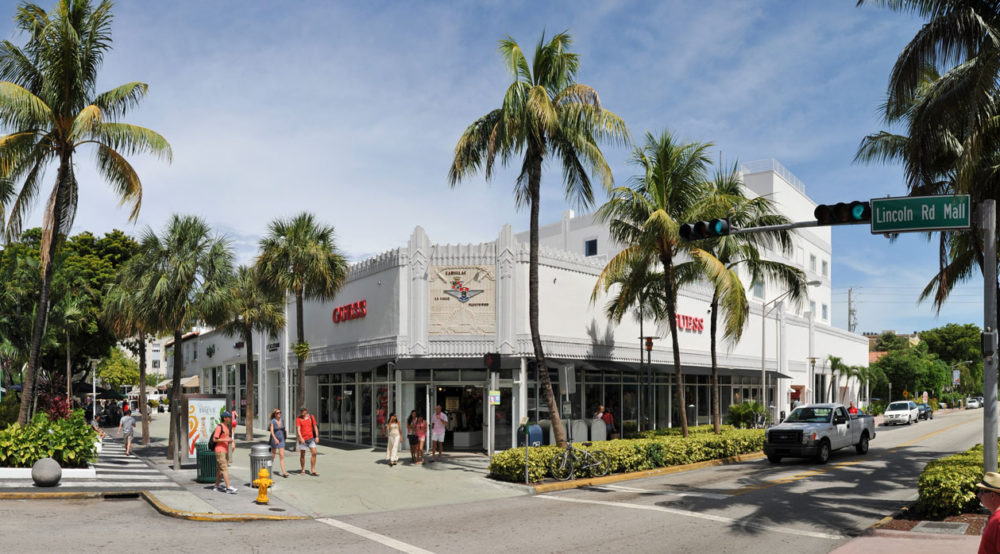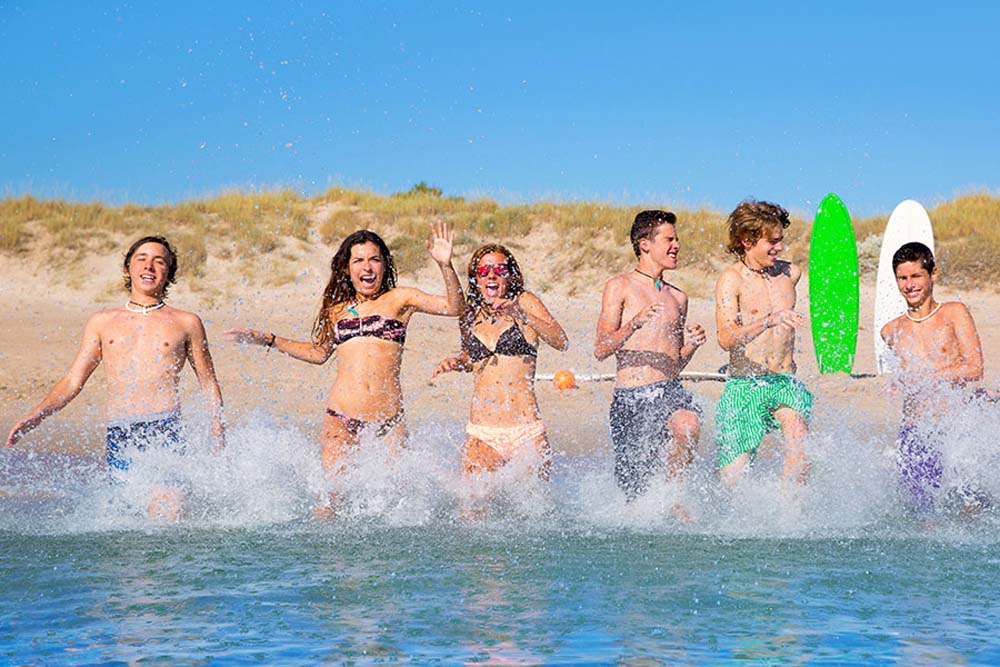
English Courses in Miami
Overview
Located at the mouth of the Miami River on the lower east coast of Florida, Miami is bordered on the east by Biscayne Bay, an arm of the Atlantic Ocean. Further east, the islands of Key Biscayne and Miami Beach shelter the bay from the Atlantic Ocean, thus providing Miami with a naturally protected harbor. Once pine and palmetto flatlands, the Miami area boasts sandy beaches in its coastal areas and gives way to sparsely wooded outlying areas. Miami’s year-round semi-tropical climate is free of extremes in temperature, with a long, warm summer and abundant rainfall followed by a mild, dry winter.
Why study English in Miami?
Students who decide to study in Miami will have a fantastic time! As a world famous city in the heart of the Sunshine State, Florida, Miami is at the center of all the action – from stunning beaches, thrilling nightlife, and some incredible natural beauty to top it all off. Here are just 5 reasons why studying in Miami is a wonderful choice:
Gorgeous Sandy beaches
The famous stretch of golden sand that makes Miami Beach is a magnet for sun worshippers. This beautiful, clean beach offers clear, sparkling waters that are perfect for snorkeling or diving, soft sands, and the perfect place to relax.
Nightlife
With lots of clubs and bars all over town, there is a place for everything and everyone. Miami is a diverse culture with ethnicities from all over the world—there are Argentinean tango bars or exotic Turkish restaurants and of course the nightlife of South Beach, bejeweled by the eye candy of the Art Deco district, as well as the bustle of Calle Ocho and the energy of Little Havana.
Wild Life and Shopping
There’s a fantastic array of wildlife in Miami – from the Wings of Asia Aviary, which boasts several feathered species from across the world, to the Miami Seaquarium – home of the famous celebrity dolphin, Flipper, and endless shopping opportunities all over the city. Miami is a shopping paradise, where visitors can find everything from luxury designer brands, to cut price items for everyday purchases.
Sports and Art
Miami has much to offer, from deep-sea fishing, golf and tennis to art festivals, outdoor food and wine extravaganzas. Students will enjoy watching games played by Miami’s major league football, basketball, hockey, and baseball as well as boat shows and auto racing.
Language Schools and Camps in this Destination
Images of Miami, Florida
Things to Do and See During a Vacation Study
Miami Beach
It is located on an island, separated from Miami but connected to it by a series of bridges. It features numerous beachfront restaurants, shops, hotels, and plenty of sunbathing opportunities. The most popular street, Ocean Drive, is a section of road located along the oceanfront and home to some beautiful Art Deco buildings, including pastel buildings from the 1930s sporting classic neon signs and awnings that cover outdoor dining areas. One block inland, there is the main oceanfront street in Miami Beach, Collins Avenue.
South Beach
Located at the southern end of Miami Beach where the Art Deco buildings line the waterfront road, this is the most famous and popular section of Miami Beach. In summer, the beach is a popular draw for locals and tourists, and in winter, the area is a popular place to stroll and escape the freezing temperatures of most of the nation.
Bayside Marketplace
Located along Miami’s waterfront, looking out over docks and boats, it is a large outdoor style mall with more than 150 specialty and tourist shops, numerous cafes and restaurants, and daily live entertainment. Tour boats visiting locations around Biscayne Bay leave from there as well a water taxi service to Miami Beach and downtown.
Bayfront Park
Bayfront Park is located on the east side of Biscayne Boulevard and was redesigned in the 1980s. The highlights of the park include the electronically-controlled Pepper Fountain, an amphitheatre used for musical performances of all kinds, a tower for laser illuminations, and three important monuments: the Torch of Friendship, symbolizing Miami’s relationships with the countries of Central and South America; the World War II Memorial; and the Challenger Shuttle Memorial.
Vizcaya Museum and Gardens
Renowned for its architecture, grounds, and artwork, this estate is one of Miami’s greatest treasures. The Italian Renaissance-style villa was the former winter home of early 20th century industrialist, James Deering. Built in 1916, it is filled with European furniture and decorative arts from the 15th to the 19th century. A number of Italian and French fountains, pools and sculptures are visible in the gardens. More than 1,100 workers and craftsmen were brought over from Europe to ensure authenticity in design. The estate has hosted a number of world leaders and important historical events including the meeting between Pope John Paul II and the former president Reagan in 1987 as well as Queen Elizabeth II during her 1991 tour of America.
Little Havana and Calle Ocho
Little Havana, the Cuban district of Miami, is known for its distinctive cultural flavor. In the area, visitors can find murals on the walls showing important Cuban figures and scenes of daily life, Cuban restaurants, specialty food shops, and Latin music drifting through the air. Calle Ocho is the main thoroughfare running through the district and home to much of the activity.
American Airlines Arena
Located on the waterfront in a modern and developing area of downtown, the arena opened in 1999. It is home to the NBA’s Miami Heat, the main venue for large concerts and other special events.
Miami Zoo
The Miami Zoo houses more than 2,000 wild animals in a cageless environment, making the animals feel at home and visitors like they are on a safari with large, open-air exhibits that allow them to enjoy the wildlife at a safe yet close range. The zoo also contains tropical plants, trees, and orchids, has a children’s area that includes camel rides.
Jungle Island
Jungle Island is a bird sanctuary, wildlife habitat, and botanical garden. There are over 1,100 birds presented in a tropical forest setting, some of which take part in daily shows. The gardens contain exotic plants, and a variety of other animals, including a rare white alligator.
Deering Estate at Cutler
Named after Charles Deering, this estate contains a pine rockland habitat, mangrove forests, salt marshes, and a coastal dune island. It is also home to the Victorian Richmond Cottage, historical buildings dated from 1896 to 1922, and an American Indian burial ground from 1500. The Artist Village, at the estate, has become an important cultural center, featuring art and artists programs.
Miami Seaquarium
The Miami Seaquarium contains dolphins, killer whales, seals, alligators, sharks and tropical fish, and offers a “swim with dolphins” program that promises to teach about the physiology, behavior and natural history of dolphins.
Freedom Tower
Located on Biscayne Boulevard and built in 1925, the Tower displays a “wedding-cake” style, and is one of the oldest skyscrapers in the southeastern United States. It takes its name from the fact that it was the immigration-processing center for hundreds of thousands of Cuban refugees in the 1960s.
Miami Science Museum
Opened in 1950, it contains hands-on and interactive exhibits covering a variety of scientific fields including physics, biology and chemistry.
Gold Coast Railroad Museum
This museum houses more than 30 antique railway cars, including the “Ferdinand Magellan”, the presidential railcar used by Roosevelt, Eisenhower, Truman and Reagan. Visitors can see the California Zephyr cars, “Silver Crescent” and “Silver Stag” as well as an extensive model railroad section.
Everglades National Park
The Everglades are just a short drive from Miami and represent one of Florida’s most unique natural features. The park is home to alligators, crocodiles, snakes, and many species of birds. Its area is a shallow river flowing out to the ocean. Visitors can walk through the wildlife or enjoy a high speed boat trip into the marshes and streams to see alligators and take photos with baby ones. It also features the Anhinga Trail, on which where visitors are likely to see a variety of wild animals.
Key Biscayne and Crandon Park
Key Biscayne is a small community with lovely beaches and beautiful parks. Inside it is Crandon Park, with an offshore reef that leaves the shoreline protected from big waves and renders it perfect for swimming. The park includes a Family Amusement Center and a Nature Center.
How to Arrive at your Language Course
Miami Seaplane Base Airport (SBP): is a public public-use seaplane base located 2 miles (3.2 km) east of the central business district of Miami on Watson Island. From the base, visitors can also enjoy seaplane tours.
More information on SBP is available here https://www.miamiseaplane.com/
Miami International Airport (MIA): located near downtown Miami, visitors can get to the airport by taxi, Uber, Supershuttle, Metrobus and car rental companies.
More travel information on MIA is visible here .





































